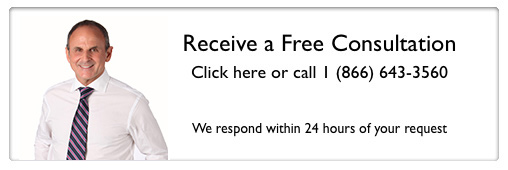It is tax season and as deadlines approach, everyone is scouring the internet and bombarding their CPA with questions. And some of the most complex questions will come from independent contractors.
The independent contractor tax form, or the 1099 form, some intricacies may not always be straightforward.
In this quick guide, we will show you how to navigate the independent contractor tax form and answer the most commonly asked questions about filing taxes as an independent contractor.
The Independent Contractor Tax Form: The Full Guide
The 1099 form is a record stating how much an independent contractor earned from their clients. There are several variations to the 1099 form, but the most common one is the 1099-MISC.
Here are the different scenarios where an independent contractor may receive a 1099 form:
- From clients or from employers who hire the worker as an independent contractor (as opposed to a W2 Employer)
- From your bank, you may receive a 1099 recording the interest earnings you may have accrued
The 1099 forms do contain your social security number. This means that the income earnings on a 1099 form will get reported to the IRS.
1099-MISC
As the 1099-MISC is the most common form, this is what we will focus on in this guide.
You will receive a 1099-MISC form reported your earnings if they meet the minimum threshold. The thresholds are as following:
- Receiving at least $10 for royalty payments
- Receiving at least $5,000 for selling consumer products outside of a retail establishment
- Receiving at least $600 for rental income, services, prizes, income payments. There are other scenarios but these are the main ones
You should receive your 1099 forms by the end of January. You should speak to your clients/employers if you do not receive your forms by this date. Your tax return has to be filed by April 15.
Schedule C and Schedule SE
If on your 1099-MISC you have a dollar amount on Box 7 for non-employee compensation, you will have to report this income on Schedule C.
You will likely be required to pay self-employment tax. This is completed on Schedule SE and is what is used to cover your Medicare and Social Security tax obligations.
Obligations from The Independent Contractor
As an independent contractor, you should know the 1099 obligations from your clients or from the business(es) where you worked as a contractor. This way you can make sure that they have not forgotten to include any information on your 1099 forms.
Your Social Security Number or Taxpayer Identification Number needs to be provided. Your legal name and address need to be provided. With an employer, this information is usually requested from you beforehand. Your employer may send you a W-9 form before sending your 1099 to confirm this information.
The 1099 form will also record the earnings you received from your work, sales, royalties or other accrued income. You may (and you should) have kept records of your earnings. If there are any discrepancies in your earnings report and that of the 1099 form, make sure you discuss this with your client/employer.
You must make sure that all of the information on the 1099 is completely accurate. Contact your employer/client if there are any inaccuracies.
Once all this information is accurate, you are ready to pay your taxes.
Obligations from The Client or the Business
If you are a client or a business, you have obligations in preparing 1099s.
What is the procedure for you, the client or business? Make sure you follow these steps accurately:
1. Prepare and Check W-9s
As mentioned in the previous section, you want to make sure that you have accurate information on your contractors and your vendors. Even if you already have this information, you should send your contractors a W-9 form and ask them to fill in their legal name, address, and Social Security Number or Taxpayer Identification Number.
Remember, it is possible that your contractor changed their name or address so you want this information to be completely accurate.
If the contractor does not submit the W-9, then you may be able to withhold up to 28% of their income and send it to the IRS. This is called Backup Withholding.
2. Prepare and Check 1099s
Once you have obtained the 1099 forms – either by downloading a PDF or by using a software program, you are ready to prepare them.
Next, make sure you accurately fill in your contractor’s information. Double and triple-check this as there should be no errors in the spelling of their legal name, their address and their SSN or their TIN.
In Box 7, you enter the income that you paid your contractor. If you withheld any income (backup withholding) then make sure you enter this information in Box 4 or Box 11 – depending on any federal or state (or both) tax that was taken.
3. Send the Forms
Make sure you give a copy (Copy B) of the 1099 forms to your contractors. Your contractors MUST receive their forms before February 1st.
Remember, your contractors will also have to file their tax returns so be considerate and try to get the forms to them as soon as is possible.
4. Form 1096
Once you have sent the 1099s to your contractors, you have to look at Form 1096. This form summarizes the totals from all the 1099s. Make sure you send all 1099s and Form 1096 to the IRS by February 28th or 29th in a leap year.
If you are filing electronically, you have until March 31st to send these forms.
5. Keep A Record
You are done! But you must keep a record (Copy C) of the forms with you in case there are any inquiries from the IRS. We suggest keeping the hard copy somewhere safe as well as scanning the forms and keeping a digital copy stored safely on an external hard drive or on cloud-based storage.
All Things Tax
Now that you know the obligations and rules regarding the independent contractor tax form you are ready to file! Be sure to meet the deadlines and always keep a copy for your records.
And for keeping yourself up to date with all things tax, be sure to reach out to us!


